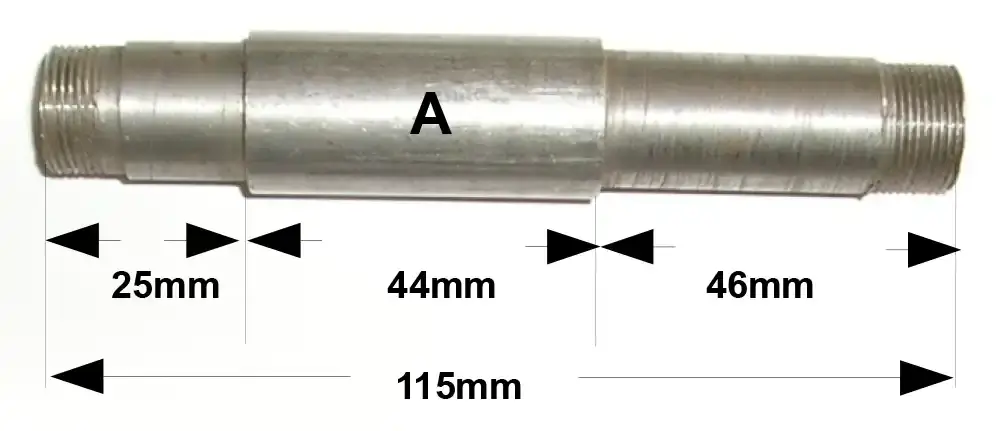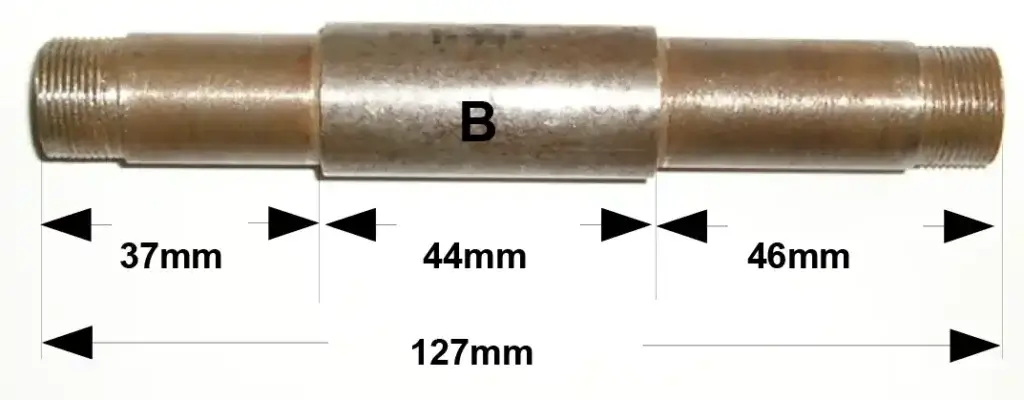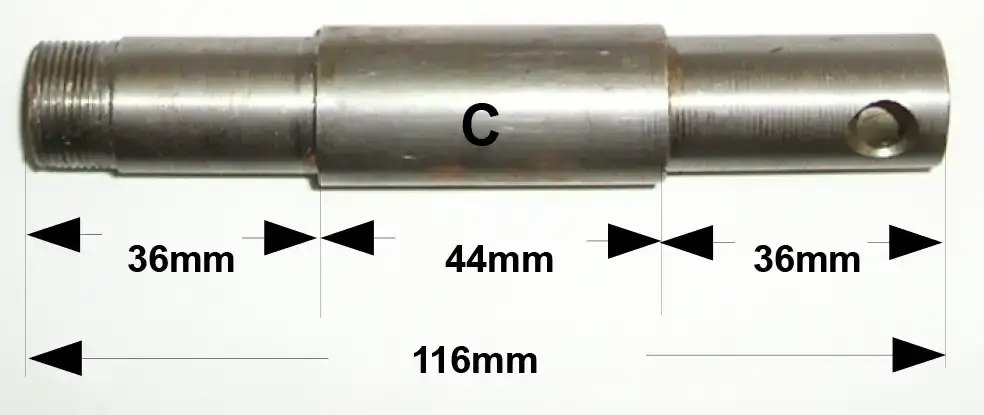Front Wheel Spacer Tubes
What's the difference?
by Alan Buehner
Originally printed in the 2010 issue #46 of Still….Keeping Track
The purpose of this article is make you aware that there were several different sizes and styles of spacer tubes used in the front hubs of the Penton and KTM motorcycles. Their purpose is to secure the inside part of the wheel bearings, space the bearings inside the hub so that the wheel, when mounted on the forks will be centered, and to allow the front axle to be easily removed or installed.
The most obvious difference is that some are threaded on both ends, and some are threaded on one end. The double threaded tubes were used on the early Penton motorcycles – from 1968 thru 1973. The single threaded tubes were used on all Penton and KTM bikes from 1974 thru 1978. From 1979 onward, the threads on the tubes were eliminated. Fine thread nuts were threaded onto the tubes to secure spacer bushings as shown in drawings 1 and 2.


Threads on the tubes caused a couple of problems. The first problem was trying to remove the brake backing plate so you could service the brake shoes. On the 1968 thru 73 bikes there was a nut securing the backing plate to the spacer tube and this nut had to be removed.
Anyone who has performed this “task” knows that 90% of the time that you try and remove this nut, it is the nut on the other side of the tube that loosens and turns, not the nut for the backing plate. The reason being is that you have to put a wrench or socket on both nuts to prevent the spacer tube from turning, which is why KTM switched over to the single threaded tube (see photo C). The backing plate can be removed without removing a nut and a hole was drilled through the tube to allow you to insert a screwdriver or rod to keep the tube from turning when you needed to remove the nut on the left side of the hub.
The other problem with threaded tubes is the risk of damaging the threads. If the threaded end is not protected when trying to remove the bearings, the end(s) can mush-room, thus damaging the threads and you will not be able to thread the nuts back on. Another problem is trying to hold the tube secure, after removing the backing plate, so that you can remove the nut on the left side of the hub. Not taking precautions can cause the outside edge of the threads to become flattened and you will not be able to thread the nut back on.
If you don't know better, the tubes look the same and should be interchangeable. But by looking at the dimensions on the photo, you can see that the centers (spacer for the bearings) are the same but the overall length of the tube and the left and right ends are different which will cause problems in trying to center a wheel in the front forks.
Tube “A” is part number 51-09-011-000 which is used in the narrow type ES 1-579 32mm Ceriani forks. It did not provide enough spacing to allow the installation of a speedo drive unit. This is an oddball part used on only a few bikes.

Tube “B” is part number 52-09-011-000 which is used on most 1972-73 125 & 175 bikes. It requires either a speedo drive unit or a spacer bushing (item #28 Drawing 2).

Tube “C” is part number 51-09-011-300 which is used on all Penton & KTM bikes from 1973+ using Ceriani and Marzocchi 35mm forks. This tube also It requires either a speedo drive unit or a spacer bushing (item #28 Drawing 2).

So when in doubt, measure your existing spacer tube before looking for a replacement and always try and obtain a “C” style tube.
